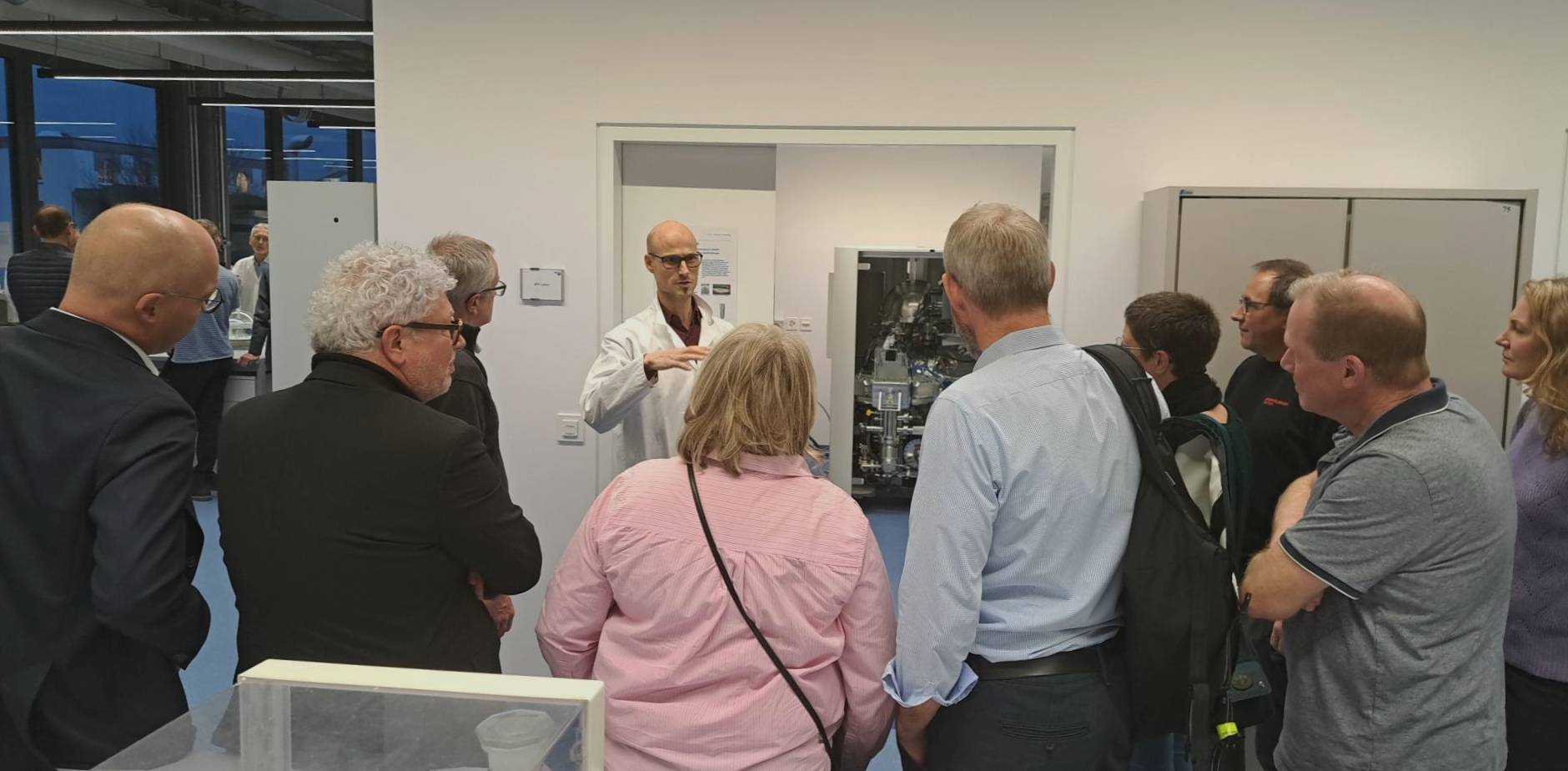RMS Foundation
Robert Mathys-Strasse 1
2544 Bettlach
Switzerland
Phone +41 32 644 2000
Our product and functional testing is tailored to your needs and stands for the highest reliability. Using state-of-the-art technology and proven methods, we ensure that your product is tested thoroughly and accurately.
We comprehensively test your products and packaging, including fatigue, surface finish, cleanliness, particle release and sealing integrity. This gives you a solid basis for the safety, validation and approval of your product.
You can rely on our expertise when it comes to individual testing requirements, quality and diligence. Your satisfaction and the success of your project are our top priority.
Determining the mechanical load-bearing capacity under simulated conditions is of great importance. We offer you both static and dynamic tests of load situations, for example in the human body, supplemented by 3D deformation measurements. We customize these services to your specific product:
Abrasion shortens the lifespan of products. In artificial joints, the abrasion particles can also cause weakening of the bone (osteolysis). We determine friction and wear in simplified pin-on-disc setups or analyze fretting corrosion for you.
We not only analyze the size and composition of powders that you use as a starting material for additive manufacturing, but we also examine particulate residues from production and abrasion particles from wear experiments or practical use. We support you in the analysis of particles in the sub-micrometer range through to larger particles in the millimeter range.
The surface of a sample is often more important than the base material. For example, the composition on the surface can differ greatly from the base material, as is the case with corrosion-resistant, chromium-rich oxide layers. The topography or surface structure also often influences the properties, such as the osseointegration of dental implants in the jaw.
Chemical or particulate impurities significantly influence a product's biocompatibility. We are happy to support you with their analyses and other aspects such as:
The quality of a medical device's packaging must ensure that the product reaches the patient in perfect condition. Important aspects here are:
Discuss your concerns with our experts. They will be happy to help you determine the best course of action.
You are welcome to drop off your samples. Just give us a quick call beforehand and we’ll take care of them. Depending on our workload, we’ll process them right away. If it's extremely urgent, we also offer express services.
We usually process smaller orders within 10 working days (within the limits of our technical and human resources). Contact us for clarification of prioritized processing for an additional charge. For larger projects, we will be happy to propose a customized schedule.
We usually communicate the test results to you in the form of a test certificate. If desired, we can prepare a more detailed report for you in which we can statistically process and interpret the results and/or make recommendations. We will be happy to send you both with a digital signature.
As an ISO/IEC 17025 accredited laboratory, confidentiality is our top priority. Further information on how we handle your data can be found in our General Terms and Conditions. Please contact us regarding additional protective measures for particularly sensitive data.
Since 1995, the services of our materials testing laboratory have been accredited according to ISO/IEC 17025. Our QM system is ISO 9001 certified.
Here you will find our latest blog posts.

RMS Foundation
Robert Mathys-Strasse 1
2544 Bettlach
Switzerland
Phone +41 32 644 2000
E-Mail
The RMS Foundation will be closed from 24 December 2025 through 2 January 2026. We will be pleased to assist you again from Monday, 5 January 2026.
Subscribe to our Info-letter, and we will inform you about 10 times a year about current developments in the fields of material testing, research, and knowledge transfer.